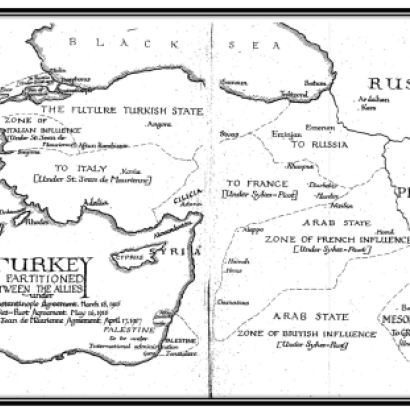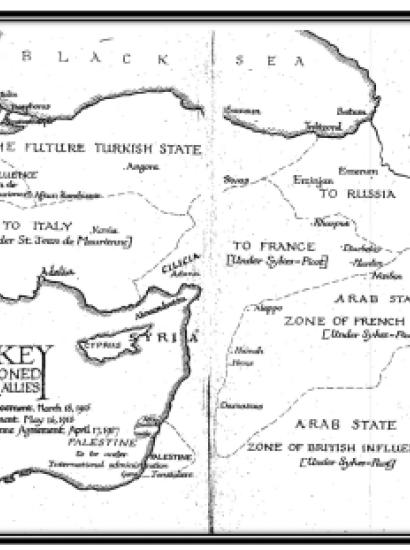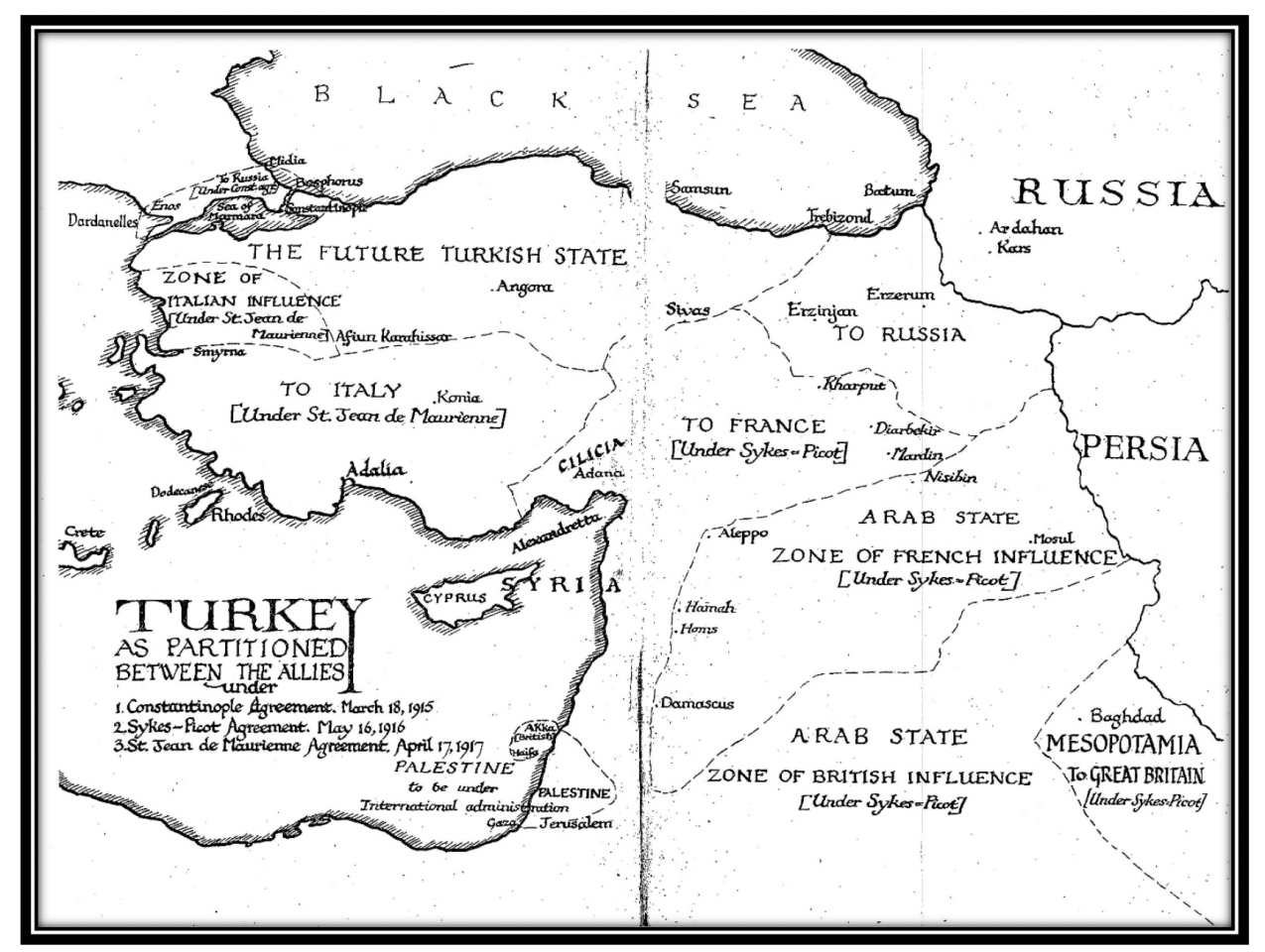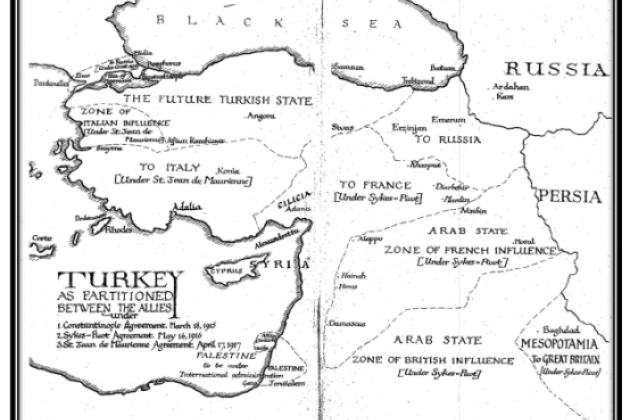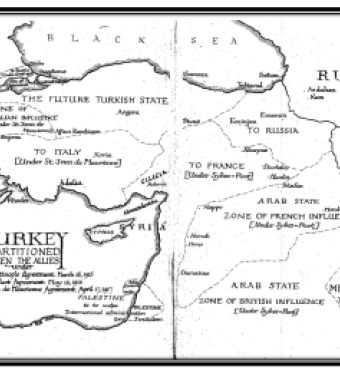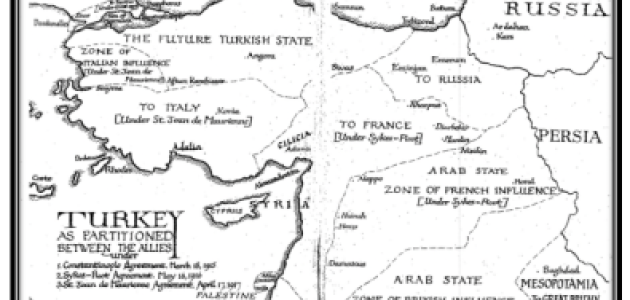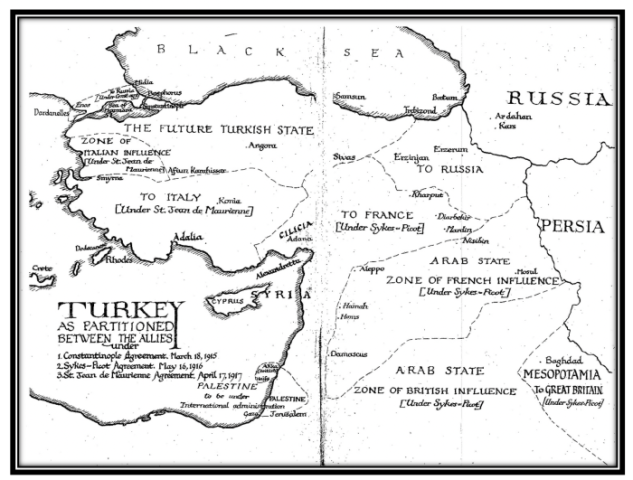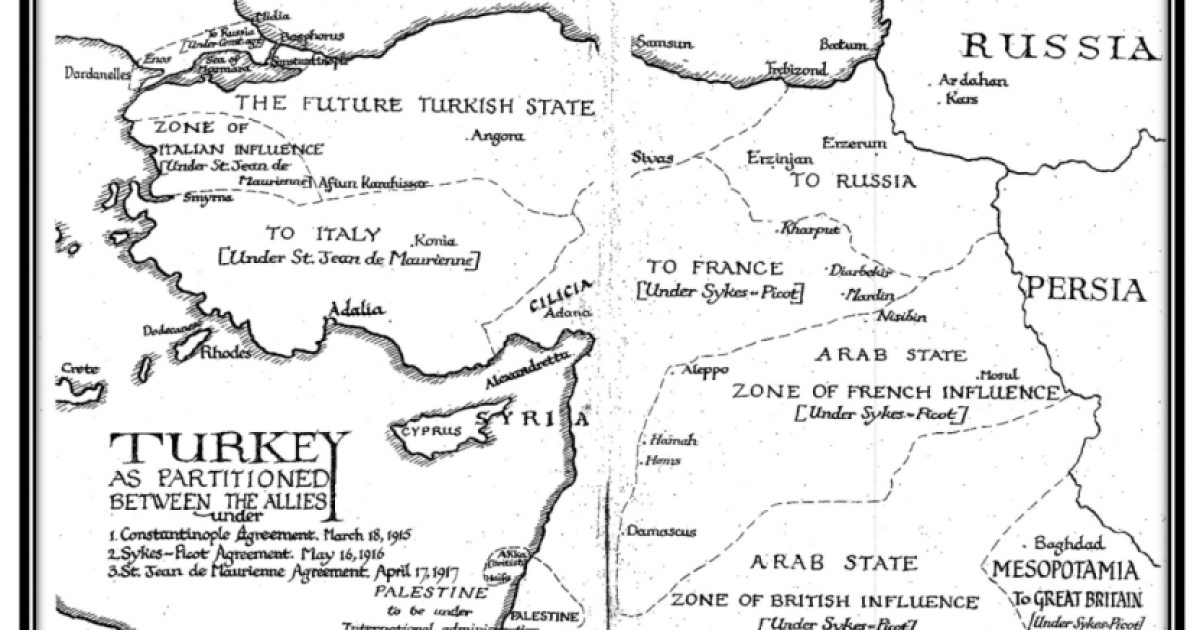A map of the Middle East after the World War I collapse of the Ottoman Empire and Caliphate shows no state boundaries, only lines of control by European powers over the territories vacated by “The Sublime Porte” -- the Islamic hegemon in Istanbul. (see illustration)
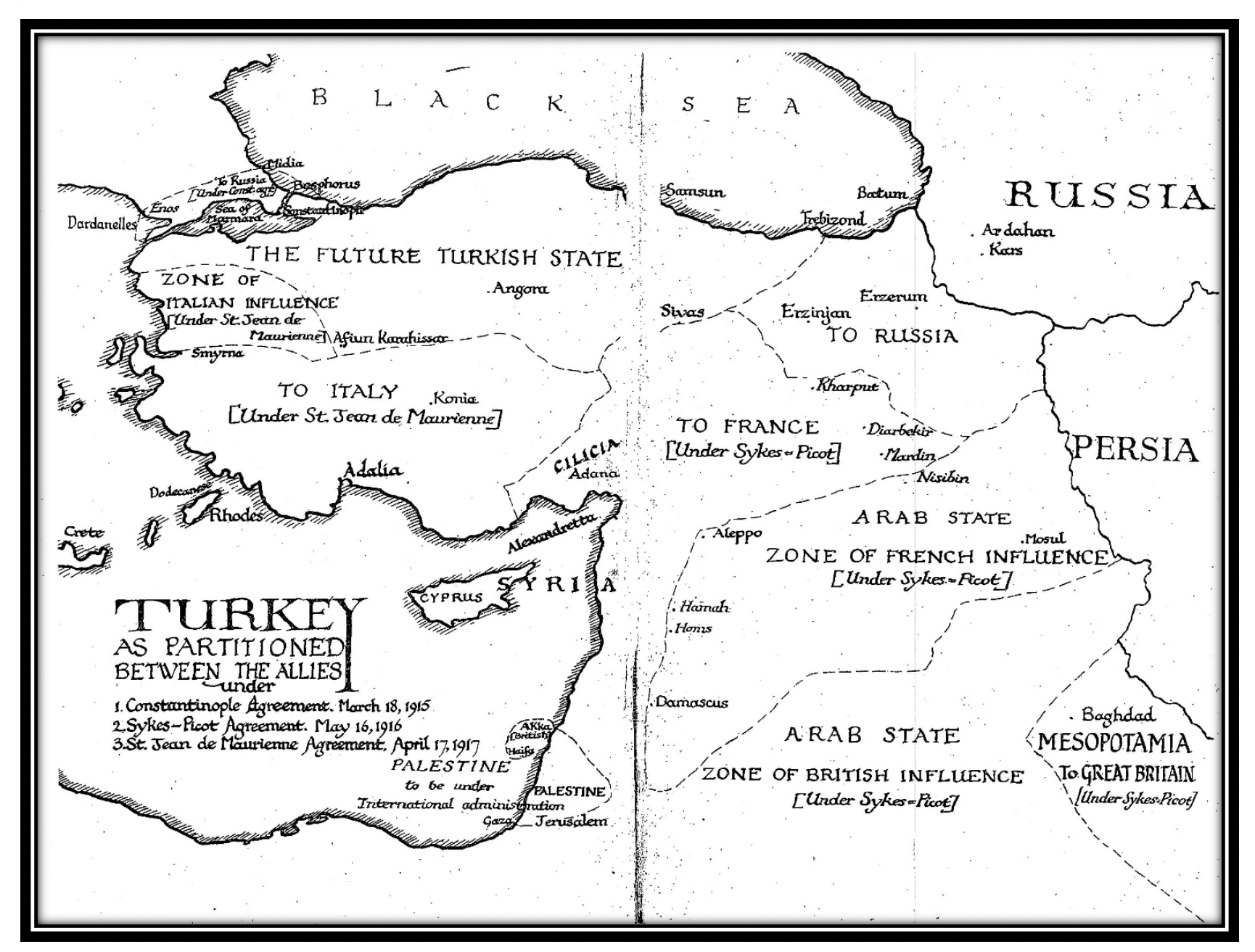
Soon a grid of internationally recognized states would be dropped down to designate every territorial part of the region as a state, or mandated state-in-the-making. The purpose was to welcome all the Arab-Islamic peoples of the Middle East into the legitimate modern world order, the “state” now being understood to be the basic unit of world affairs. This new map of the Middle East fixed itself in the mind of those concerned with international affairs.
Before long, those state units would be filled by a variety of autocratic ruling regimes: hereditary monarchies, coup d’état-installed juntas of colonels, Potemkin-parliamentary strongmen, and other one-party rulers in perpetuity. For most of the decades of the late twentieth and early twenty-first centuries, “the international community” recognized and mentally visualized the Middle East as one of the many state-centered regions of world order, while during the same period many or most of the ruling regimes of the region promoted their own political interests, supported terrorist surrogates, and prioritized pan-Arab and pan-Islamic commitments in ways that ran counter to their nominal responsibilities to the established international state system. They waged war repeatedly with the aim of eradicating the State of Israel or, on the way toward that goal, attempting to delegitimize its roles in the established political-economic-diplomatic international order. All this was carried out within the mental map of the region as an inherent realm of legitimate diplomacy.
Now, perhaps, in this still-new twenty-first century, a phase may have opened which is beginning to alter the mind’s traditional map of the Middle East through an early sketch of redrawing its political and territorial reality.
This has recently been seen in the form of protests by peoples expressing a determination not to continue to live under the varieties of oppressive regimes openly imposed or in the making. A new taxonomy of such protests would be useful. Each of the recent examples seems distinctive: some local, others tribal, ethnic, religious, doctrinal; some professing universality, some underground, others carried out in the streets when they can get away with it. If they share a commonality, it is detrimental to the concept and reality of the state in the Middle East. A “The State of the State” address, 2020, would deliver a grim message. Using the simple Westphalian definition of a state as a clearly bordered territory governed by a sovereign power, the run-down might point out that Lebanon, Syria, Iraq, Afghanistan, and Yemen no longer qualify. Iran has been a four-decade-long strategically duplicitous regime designed to exploit the international state system while determined to overthrow it. Saudi Arabia is a family, tribe and sect in a downward managerial spiral. Oman is a version of Saudi, albeit competent. Jordan, the Hashemite Kingdom, remains a state however fragile, and the small Gulf city-states make the grade in a category all their own. Turkey and Egypt are states, but seem to have reverted somewhat from that modern concept toward their distinctive roles as bearers of their earlier uniquely historical-civilizational identities. All in all, “The State of the States” across the region is precarious. As popular protests arise from the bottom up, and the institutions of the state display decline, a pattern begins to appear. From the top down the long-term strategy of the Islamic Republic of Iran has created, de facto, a neo-imperial Persian Shia sphere of influence ranging through formal state borders from Afghanistan’s Herat to the Mediterranean coast.
Now, we see a top-down move by Israel in the Trump-Kushner “Deal of the Century” claim to “solve” the plight of the Palestinians. In the cold light of hard ball realism the Israeli declaration looks less like a diplomatic initiative and more like a clever emulation of the way that the People’s Republic of China has taken control of the South China Sea: claim it as legitimately yours, occupy it, and then require the international state system and international law to live with it as an irreversible reality of “facts on the ground”’ in this case, the facts being Israeli settlements as the one-to-one counterparts to PRC-occupied reefs and islets and ultimately to all the spaces in between.
So the pattern we see is the one etched by the old Chinese image of “scratches on our mind.” In today’s case it is redrawing the map of the Middle East in the thoughts of the world’s leaders and their adversaries as a picture superseding that found in the Rand-McNally atlas on the bookshelf. From this angle of vision there are only four big regional powers: Israel, Iran, Turkey, and Egypt; the first two as rivals with far-reaching plans and operations, the third caught in a still-incoherent search for its role, and the fourth preoccupied by its attempt to revive and secure its one-preeminent place in the greater Arab-Islamic “Nation.”
Two Big World powers appear to understand this new map-making process and the likelihood of its continuing progression in the near-to-mid future: Russia and China. Each has its own version of a geographical “bases” approach; Russia to acquire military-naval-air rights on the eastern Mediterranean littoral; China to gain contractual presences in key port cities across the region and beyond. The Russians add muscle to their policy by “boots on the ground” with selective air strikes here and there from above. China’s musculature comes in the form of tempting infrastructure proposals and promises within its grandiose “Belt and Road” intention to reshape the region within a wholly transformed, Sinicized globalization.
The question is whether this new Middle East map is a forerunner for a post-international state system world-wide, or whether that established “modern” structure, and the Middle East’s genius for disarray amidst dictatorship, will fend off this emerging revolutionary transformation.







